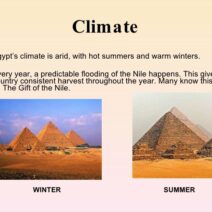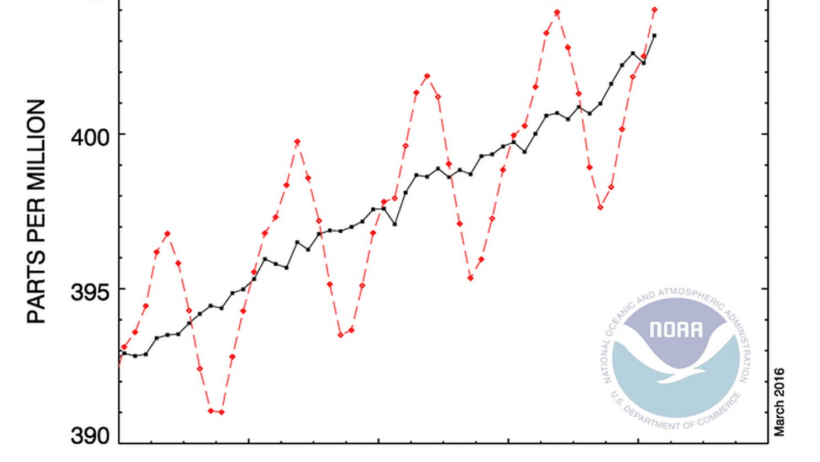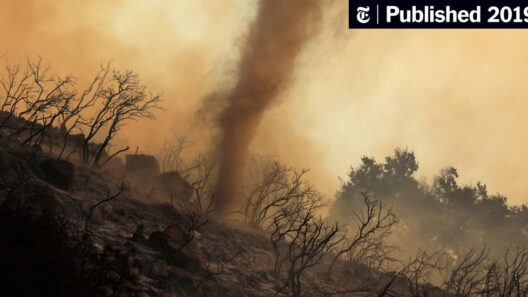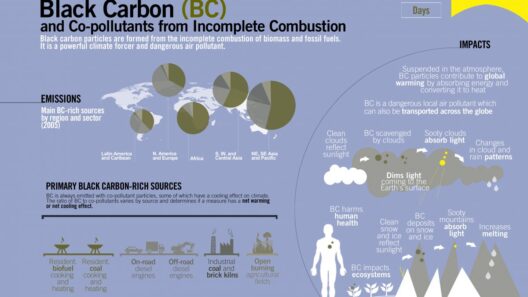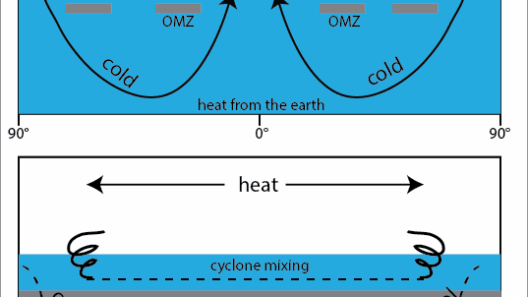As the world grapples with the palpable effects of climate change, understanding the intricate dance between carbon dioxide (CO2) emissions and global warming is paramount. For many, carbon dioxide represents an elusive or simply overlooked component of the atmosphere. However, its ever-increasing presence serves as a linchpin in the Earth’s warming narrative.
The Earth’s atmosphere is a complex, multifaceted system, and CO2 plays a critical role within it. It is one of the greenhouse gases—gases that trap heat in the atmosphere, creating a ‘greenhouse effect.’ While some greenhouse gases occur naturally, an alarming proportion of CO2 emissions are anthropogenic, stemming from the burning of fossil fuels, deforestation, and various industrial activities. Understanding this transition is essential as we navigate the consequences of modern living.
To grasp how CO2 emissions drive global warming, it is important to examine the foundational principles of radiative forcing. Radiative forcing refers to the difference between solar energy absorbed by the Earth and energy radiated back to space. An increase in CO2 levels enhances this radiative forcing, leading to an imbalance where more energy is trapped within the atmosphere. This is not a recent phenomenon. Since the Industrial Revolution, the concentration of CO2 in the atmosphere has surged from about 280 parts per million to over 400 parts per million in recent years. This unprecedented rise is a direct result of human activities.
The consequences of increasing CO2 levels manifest through various systems, notably in climate patterns, sea levels, and ecosystems. Firstly, altered climate patterns produce severe weather anomalies, including intensified storms, prolonged droughts, and extraordinary heatwaves. These extreme conditions wreak havoc on agriculture and biodiversity, reshaping communities and forcing migrations.
Moreover, the warming effect contributes significantly to the melting of polar ice caps and glaciers, precipitating a rise in sea levels. Coastal regions worldwide face the imminent threat of inundation. Particularly vulnerable are low-lying countries that may find their very existence jeopardized by encroaching seas. The Intergovernmental Panel on Climate Change (IPCC) warns that continued emissions could lead to a potential rise of up to two meters in global sea levels by the end of this century, displacing millions.
Understanding the ecosystem impacts is equally crucial. As temperatures rise, oceans absorb much of the excess heat, resulting in ocean acidification. This phenomenon disrupts marine life, particularly organisms with calcium carbonate shells or skeletons, such as corals and shellfish. Coral reefs, often dubbed the ‘rainforests of the sea,’ are among the most impacted ecosystems. Their decline leads to the loss of marine biodiversity and jeopardizes the livelihoods of millions who depend on these systems for sustenance.
The interaction between rising CO2 levels and the biosphere is a complex web of cause and effect. Ecosystems are not static; they adapt over time. However, the rapid pace of climate change poses significant questions about survival and adaptation. Species that cannot migrate quickly enough to cooler habitats face extinction. The disruption of food webs creates a ripple effect, exacerbating the challenges facing both terrestrial and aquatic organisms.
To mitigate these consequences, immediate action is imperative. Addressing CO2 emissions hinges on a multi-pronged approach that encompasses policy changes, technological innovation, and societal shifts. First and foremost, reducing fossil fuel consumption is essential. Transitioning to renewable energy sources, such as solar, wind, and hydroelectric power, represents a significant step towards curbing emissions. Countries worldwide are beginning to embrace this transformation, investing in clean energy infrastructure and incentivizing green technologies.
Additionally, enhancing energy efficiency in industries and homes can lead to substantial reductions in carbon footprints. Technologies aimed at efficient energy use provide a dual benefit: they lower utility costs and mitigate environmental impacts. The adoption of electric vehicles and public transportation options can also alleviate dependence on fossil fuels while promoting cleaner air in urban landscapes.
Moreover, reforestation and afforestation are critical strategies to sequester carbon from the atmosphere. Trees absorb CO2 as they grow, serving as natural carbon sinks. By restoring ecosystems and preserving existing forests, we can enhance the planet’s ability to mitigate CO2 levels while simultaneously improving biodiversity and air quality.
Public awareness and education play a crucial role in advancing collective action against climate change. Understanding the linkage between carbon dioxide emissions and global warming fosters a sense of responsibility and urgency within communities. Individuals can contribute through lifestyle changes that prioritize sustainability: reducing waste, conserving energy, and supporting eco-friendly products and practices. Grassroots movements can culminate in policy changes that hold corporations and governments accountable for their environmental footprints.
In conclusion, the increasing levels of carbon dioxide are a formidable driver of global warming, presenting challenges and opportunities perplexing in their complexity. The intersection of human activity and atmospheric science underscores the necessity of immediate, collective action to avert further destabilization of our planet. By understanding the intricate ways in which CO2 emissions contribute to climate change, society can transition towards more sustainable practices and foster resilience in the face of environmental degradation. What we decide today will shape the legacy we leave for future generations, compelling us to act with purpose and foresight.


